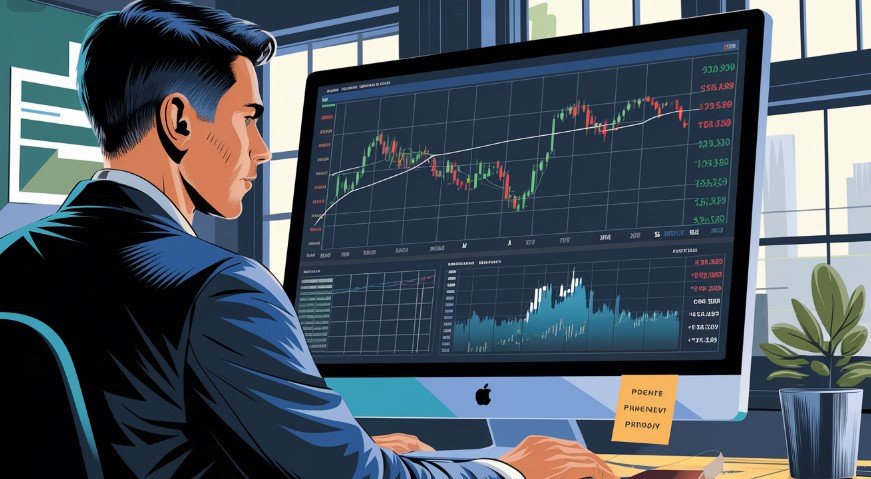Gold has captivated humanity for thousands of years. From its role as currency and a symbol of wealth to a modern hedge against inflation, gold’s place in financial systems is deeply rooted. In today’s digital age, trading gold doesn’t require vaults or coins—it happens with contracts and screens. This evolution has led to the rise of gold futures trading, an essential tool for investors and speculators alike. For beginners looking to enter this dynamic market, paper trading provides a risk-free entry point to build skills and confidence. This article explores how gold futures trading works and how paper trading can prepare you to succeed.
Understanding Gold Futures Trading
At its core, gold futures trading involves contracts to buy or sell gold at a future date for a price agreed upon today. These contracts are standardized and traded on exchanges like the COMEX (a division of the Chicago Mercantile Exchange). Unlike purchasing physical gold, trading gold futures allows investors to profit from price movements without ever handling the metal.
Each gold futures contract typically represents 100 troy ounces of gold. When you trade a contract, you’re not necessarily aiming to take delivery of physical gold; most traders close their positions before expiration, realizing gains or losses based on price changes.
Why Trade Gold Futures?
There are several reasons traders and investors are drawn to gold futures:
- Leverage: You can control a large amount of gold with a relatively small margin deposit.
- Liquidity: Gold futures markets are highly liquid, making it easy to enter or exit trades.
- Hedging: Producers and consumers of gold can lock in prices, protecting against price volatility.
- Speculation: Traders can profit from short-term movements in gold prices based on market news, economic data, and geopolitical events.
However, the same leverage that makes futures attractive can also amplify losses, making it a high-risk arena for the unprepared.
Challenges for Beginners
New traders often find gold futures trading intimidating. The jargon, speed of execution, and need for strategic discipline can be overwhelming. Mistakes in this market can be costly, particularly when trading on margin.
This is where paper trading becomes invaluable.
What is Paper Trading?
Paper trading is the practice of simulating trades without using real money. It allows you to experiment with trading strategies, understand market dynamics, and build confidence—without the financial risk.
In the context of gold futures trading, paper trading involves using real-time or historical market data to simulate buying and selling futures contracts. You track your trades, analyze outcomes, and refine your approach—all without risking a dollar.
Modern platforms like TradingView, Thinkorswim, and NinjaTrader offer paper trading features that mimic live market conditions. These tools are invaluable for anyone looking to test their strategies in gold futures markets before committing real capital.
Benefits of Paper Trading in Gold Futures
- Risk-Free Learning Environment
Paper trading enables beginners to learn how gold futures markets function without the fear of losing money. This is especially important in a market known for its volatility. - Strategy Testing
Whether you’re using technical analysis, fundamental analysis, or a combination, paper trading allows you to evaluate the effectiveness of your strategies in real-world scenarios. - Understanding Order Types and Platform Tools
Gold futures trading platforms offer complex order types like stop-loss, limit orders, and OCO (one-cancels-other) orders. Practicing with these tools in a paper trading environment helps reduce errors when trading live. - Emotional Training
One of the most challenging aspects of trading is emotional discipline. Paper trading helps you recognize your psychological tendencies—like panic selling or revenge trading—without real financial consequences.
How to Start Paper Trading Gold Futures
- Choose the Right Platform
Pick a trading platform that offers robust paper trading features for futures. Ensure it includes real-time gold futures data, customizable charts, and trading indicators. - Understand the Contract Specifications
Learn the specifics of the gold futures contract you plan to trade—such as tick size, margin requirements, and trading hours. - Create a Trading Plan
Set clear goals, risk tolerance, and a strategy. Will you trade based on moving averages, support/resistance, or macroeconomic trends? Your paper trading should mimic your real trading intentions. - Track Your Performance
Maintain a trading journal. Record why you entered each trade, the outcome, and what you learned. Over time, this will help you refine your approach. - Evaluate and Transition
Once you’ve consistently performed well in a paper trading environment, consider transitioning to a small live account. Even then, proceed cautiously and increase your exposure gradually.
Common Mistakes in Paper Trading and How to Avoid Them
- Treating It Like a Game
Because there’s no real money at stake, some treat paper trading casually. To gain true benefit, treat each paper trade as if your own capital were on the line. - Overtrading
It’s easy to take excessive trades when there are no financial consequences. Focus on quality over quantity. - Ignoring Slippage and Commissions
Some platforms don’t account for transaction costs in simulations. When transitioning to real trades, always factor in slippage and commissions. - Failing to Reflect Emotionally
Paper trading can’t fully replicate the psychological stress of losing money. Take time to reflect on how you would feel if real funds were at stake.
Real Trading vs. Paper Trading: Bridging the Gap
While paper trading is a fantastic tool, it’s not a perfect substitute for live trading. In real markets, emotions like fear and greed come into play. Additionally, execution speed, market depth, and slippage can differ.
To bridge this gap:
- Start live trading with small positions.
- Use the same strategies you’ve refined through paper trading.
- Continue paper trading alongside your live trades to experiment and learn without risking capital.
Conclusion
Gold futures trading opens a world of opportunity for those who understand its intricacies and risks. But diving headfirst into such a volatile market without preparation can be financially disastrous. Paper trading provides the ideal training ground—allowing traders to gain experience, refine strategies, and develop discipline in a simulated environment.
